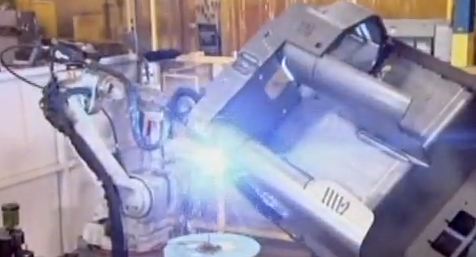As companies during World War One were demanding more and more efficiency, the forklift was a big game changer. The technological advances in the forklift have made the forklift truck one of the most vital components of today’s speedy material handling industry.
The welding robots used to assemble these forklift trucks are top notch and produce an incredibly sound structure. First, the body is constructed from steel and painted. Then, the frame for the forklift’s lift system are welded by hand.
Essential components such as the hydraulic pump, hydraulic reservoir, emergency shut-off switch, control handle, and operating computer are installed on the forklift’s body. The control handle operates both the forward and backward motion of the forklift as well as the lift assembly. The hydraulic system is then flushed with oil to rid the system of any dirt. The smallest pieces of dirt can damage an entire system.
The main frame carries the brunt of each load, so its components must be sturdy and well built. The mechanics grease the frame to slide in the inner rails. Heavy chains are then threaded through the rails and fastened to the main frame using large bolts. During operation, the chains are moved by the lift cylinders to elevate loads.
Next, the carriage is slid into the inner rails. This carriage is responsible for holding various attachments. The most common attachment is the forks. Once the main frame is complete, it is bolted to the forklift’s body.
Finally, graphics are installed the forklift and a cover is fastened over the forklift’s internals. The forklift is then ready to be shipped to a warehouse where a battery and attachments will be installed.
That’s all there is to it! Be sure to stop by often for more material handling equipment news and showcases!

